Blog
Why it makes sense for Maldives to be Singapore’s first leisure travel bubble

By Brendan Sobie
Singapore could take the lead in the Asia Pacific in establishing leisure green lanes, spearheading a partial recovery in international air travel and tourism.
Transport Minister Ong Ke Yung’s remarks last week about Singapore considering reciprocal green lanes for leisure travel has provided a glimmer of hope for the region’s aviation and tourism sectors, which have been decimated by the closure of borders since the start of the Covid-19 pandemic early this year.
While there has been talk of leisure travel bubbles in the Asia Pacific since early May, not a single example has emerged.
Leisure travel has meanwhile resumed in Europe, where the first travel bubble was established in mid-May, and in other regions such as the Middle East.
In the Asia Pacific, only domestic tourism has so far resumed despite it having the first countries and territories that were able to successfully contain the coronavirus outbreak.
So far in Asia there has only been a small number of business travel bubbles that are so onerous and restricted that passenger volumes have been tiny.
For Singapore, the fast lane with China has generated very few passengers since it was introduced in June and the new green lane with Malaysia has a cap of only 400 business travellers per week.
Until last week, Singapore was only considering green lanes for business travel.
Singapore is now open to the idea of leisure travel bubbles and replacing 14-day quarantine requirements — which as Mr Ong noted deter most travellers — with a rigorous testing regime.
The question now becomes which country will be the first to forge a leisure green lane with Singapore.
There are several possibilities but Maldives makes the most sense as it provides an ideal pilot programme given the size of the country and type of travel.
Maldives is an archipelago in the Indian Ocean with over 150 resort islands. Each island has only one resort, making it a much safer destination in a pandemic environment than others.
Even in normal times, tourists do not hop between resorts or islands and few bother visiting the capital Male, which is its own island and where most of the local population lives.
After landing, tourists go directly to their resorts and stay there for their entire stay. Excursions consist of boat trips for snorkelling, diving and fishing that involve only guests from their resort.
Several Maldivian resorts could be made exclusive for Singapore residents, resulting in a sealed bubble without tourists from other countries.
There would be exposure to staff but a strict testing regime for both guests and employees would significantly reduce any risk. Maldives has reported about 6,000 Covid-19 cases and over 20 deaths since March but most of the islands do not have any recent cases.
There is still a risk associated with any resumption of international travel. However, the leisure green lane concept Singapore is considering can sufficiently manage this risk with Covid-19 testing and strict protocols.
A leisure green lane with Maldives would be of much lower risk compared with any other country, as those would inevitably include some mixing with other tourists.
For example, any of the typical island destinations in Southeast Asia — Bali, Boracay, Langkawi, Phu Quoc, Phuket and Samui — have hundreds of resorts with tourists typically leaving their resorts for meals and excursions.
Requiring tourists to stay at these resorts for the duration of their holidays would be hard to enforce.
Some of these destinations and their countries could become leisure green lanes later but starting with Maldives represents the best and safest choice.
Unlike most other countries in Asia, Maldives has already reopened its borders, making an agreement with Singapore relatively easy to forge.
Tourism resumed in Maldives on July 15 and 58 resorts are now open, providing over 7,000 rooms, according to Maldives Ministry of Tourism data. Another 12 resorts have been approved to open by early September.
Currently, Maldives is only hosting tourists from Europe and the Middle East, but occupancy rates remain low, providing more than enough hotel rooms for a potential Singapore bubble.
Maldives would be receptive to a travel bubble with Singapore (and other Asian countries) given its heavy reliance on tourism, which accounts for nearly a third of its gross domestic product.
Several resorts would be keen to open exclusively to the Singapore market given the obvious boost in business it would generate and also put in place measures required to support a safe and sealed travel programme.
Singapore-based airlines would be very supportive too. Prior to Covid-19, there were 16 weekly flights from Singapore to Maldives, including seven by Singapore Airlines and nine by its regional subsidiary SilkAir.
A green lane arrangement could result in more flights during the pandemic by both SIA and SilkAir as well as possibly budget airlines Scoot and Jetstar Asia.
Scoot served Maldives until October 2019, when SIA Group decided to transfer Scoot’s flights to SilkAir as part of a route consolidation initiative. Jetstar Asia has never served Maldives but would likely be eager to launch service to any leisure market that opens up under new travel bubble arrangements.
Prior to Covid-19, all Singapore-Maldives flights landed at Velana International Airport, which is located on its own island next to Male.
However, a new route from Singapore to the Maldives’ second international airport, located at Gan around 500km to the south of Male, would also be viable under a travel bubble.
Gan is more accessible to several resorts located in the southern part of Maldives that now can only be reached from Singapore via a domestic flight after landing in Male.
While domestic flights can be considered, limiting the safe travel programme to resorts that can be accessed by boat from Velana Airport or Gan Airport would be a more prudent option.
There would be huge pent-up demand for holidays in Maldives as Singapore residents have not been able to travel anywhere for several months.
Unlike nearly every other country in Asia Pacific, Singapore has no domestic travel market, limiting local tourism to staycations.
Opening up a leisure green lane with Maldives would result in a morale boost for Singapore travellers.
Depending on their Covid-19 situation, other leisure markets could open up subsequently and this is important as Maldives is not big enough to accommodate all the demand and is also a costly destination.
However, quick implementation of an initial destination would provide an initial glimmer of hope for Singapore residents as well as its airlines and travel agents.
A leisure travel bubble between Singapore and Maldives could potentially support 500 passengers per day. This would likely require three flights per day.
The impact on passenger traffic at Changi Airport would not be huge as 500 passengers per day in each direction would generate only 30,000 passengers per month.
However, 30,000 is significant in the current environment as it would boost Changi’s traffic by about 50 per cent. Changi is now averaging about 2,000 passengers per day compared to nearly 200,000 prior to Covid-19.
Green lanes with larger markets — such as Japan, South Korea, Taiwan, Thailand or Vietnam — would have a much larger impact.
However, establishing green lanes with these countries would take longer as most are not yet ready. Singapore will also be understandably cautious about the potential risk of imported Covid-19 infections under a high volume leisure travel scenario.
Maldives represents a start and provides an ideal testing ground for a concept that can be gradually expanded, enabling Changi and SIA to gradually recover from the current 99 per cent reduction in passenger traffic.
Note: Brendan Sobie is the founder of Singapore-based independent aviation consulting and analysis firm Sobie Aviation. He was previously chief analyst for Capa – Centre for Aviation. This op-ed was originally published on Todayonline.com (the original article can be found here).
Blog
How to diversify Maldives’ tourism-heavy economy

By Sonu Shivdasani
At Soneva, we adhere to the principle that local is best. Whether it’s food produced by our organic vegetable gardens or the fish we source from neighbourhood fishermen, local produce is always fresher, better tasting, and more sustainable.
Producing things within the country, rather than importing everything from abroad, also makes economic sense. And the greater variety of products and services you produce in-house, the easier it is to diversify the economy, making it more resilient.
In an Op-ed that I wrote last year, I mentioned that, “The Maldives is one of the world’s best places to operate a resort. And yet, the cost of borrowing the money to build one is eye-wateringly high. How do we explain this paradox?”
During a recent conversation with a Male-based banker, I was told why lending rates in the Maldives are so high: there is a perception of risk among the financial community because the Maldivian economy is so dependent on tourism.
As Maldivian President Ibrahim Solih, said during his National Day speech on November 11, 2020: “Covid-19 has made us realise our economy cannot solely depend on tourism. This is something we have always debated, yet failed to adequately address.”
It’s easy to understand why the Maldives wants to put some of its eggs in baskets other than tourism. Covid-19 has swung a wrecking ball at Maldivian tourism, which in turn has devastated the government’s finances, foreign currency reserves, and the value of the Ruffiya, which are all dependent on tourist dollars.
Though tourism is recovering since the border reopened in July, and many resorts (including Soneva Fushi and Soneva Jani) are currently as busy as they were last year, a few good months at the end of the year won’t make up for the carnage of March-July. And so, how to diversify the Maldives — a country that’s 99 per cent ocean, and with a small population?
Extracting better value from Maldives’ fish catch
An obvious place to start is in areas the Maldives already does well: fishing. Although the Maldivian fishing industry is already large, much of the value of the fish is in the processing, not the catching.
Here, the Maldives could improve. Instead of selling frozen, whole tuna to Thailand, more money would be made if all Maldivian fish were canned in the Maldives. The fisheries ministry recently said as much; announcing plans to expand cold fish storage.
The branding of Maldivian tuna could also be enhanced. The Maldives operates the world’s most sustainable fishing fleet. Every fish is caught by hand, with a pole and line, one-by-one. Nets and long-lines are banned, meaning there is almost no by-catch of sharks, turtles, dolphins and other charismatic or endangered sea creatures.
More could be made of this inherent strength, especially as consumers in Western export markets demand more sustainable food. Maldivian tourism is globally renowned for being the world’s most luxurious. Maldivian fish should be equally known as the world’s most environmentally friendly.
Growing our own food
Although the Maldives is 99 per cent sea, let us not forget about what can be done on that 1 percent of land. It’s heartening to see a big government push towards growing more food. There is huge demand, especially from resorts, for locally-grown, fresh produce.
Both Soneva Fushi and Soneva Jani have highly productive fruit, vegetable and herb gardens that supply the bulk of the ingredients for our restaurants. What we don’t produce ourselves, we strive to buy locally to maintain freshness and reduce carbon emissions. Over the summer Soneva also released a series of video tutorials based on our experiences, showing ways to farm in the Maldives, either on a commercial scale or in a window box.
Looking beyond farming and fishing, another opportunity the Maldives could explore further is its relationship with India.
The $1.4 billion assistance granted by India in 2018, and the more recent economic aid package, have both been of great help. But, rather than aid, the Maldives should engage with India to see how it can grow its economy both through tourism and non-tourism means to develop closer ties with this populous and economically significant neighbour.
Potential offshore financial hub
For example, the Maldives could enter into a double tax treaty with India. The Maldives could also negotiate with India, to allow Indian citizens to make personal investments in the Maldives and be able to remit more than $250,000 — the current Reserve Bank of India limit on any foreign currency remittance by an Indian in a particular year. In addition to this, perhaps more Indians could be allowed to pay for personal investments in the Maldives with Rupees. These Rupees could then be used by the Maldives to buy Indian goods.
With a double tax treaty with India in place, the Maldives could explore the opportunity to become a financial centre. Could the Maldives become India’s offshore financial centre, playing a similar role that Hong Kong does to China?
There is a closer Indian Ocean example; in 1989, Mauritius’ government decided that its economy was too dependent on tourism and sugarcane, so it chose to make the country an offshore financial centre.
Mauritius initiated double tax treaties with 18 African countries and India. Like the Maldives, Mauritius’s tax rate was considerably lower than the 18 African neighbours and India. As a result, foreign investors who wanted to invest in India or these 18 African countries set up companies in Mauritius, helping them to legally reduce their tax bills. There are now 20,000 offshore Mauritius companies.
On average, the basic statutory fees that the Mauritius government charges, such as directors fees, and stamp duties for operating companies, come to $5,000 per year. For all the offshore companies registered in the country, these fees tally up to $100 million per year — a huge source of revenue for the government.
Moreover, according to a recent report, Mauritius-incorporated offshore companies have $630 billion of assets. This is 50 times Mauritius’ GDP. If we assume that these companies achieve a 10 per cent return on capital, that means they have net profits of around $63 billion. It is likely that the Mauritius government received more than one per cent of these profits as taxes. Even at one per cent, this is the equivalent of $630 million of revenue to the government.
It has taken Mauritius 30 years to get to where it is. If the Maldives starts today, potentially in 30 years’ time, the government could generate more revenue from offshore finance than from tourism. There are many considerations when setting up an offshore centre. We have recently seen a global backlash against tax havens, so this will require a lot of thought and consideration. But, it is an opportunity.
Second-home schemes and outsourcing
Introducing second home schemes for foreigners is another way to diversify the economy. The government recently changed the law to allow foreigners to become resident in the Maldives if they invest $250,000 dollars, and deposit another quarter of a million in a local bank’s fixed deposit account for at least five years. Similar programmes, in countries such as Malaysia, are very popular. They make it easier for the government to sell debt and help ease dollar shortages.
Lastly, the Maldives could also look to offshore business process outsourcing, which has made cities such as Bangalore wealthy. These days, a British or American customer ringing into a bank call centre is as likely to speak with someone sitting in Bangalore or Hyderabad as Birmingham or Houston. While the Maldives does not have the huge pool of labour that India does, young Maldivians speak English well, so offshore processing could be done, albeit at a smaller scale.
The Maldives has paid a heavy price this year for its over-dependence on tourism. Nobody predicted Covid-19, or the impact it has had on the economy. But, as any good investor will tell you, the best way to mitigate risk is through diversification.
Editor’s Note: This op-ed was originally published on Linkedin by Sonu Shivdasani. Sonu is the founder and CEO of Soneva, which owns luxury resorts Soneva Fushi and Soneva Jani in the Maldives, and Soneva Kiri in Thailand.
Blog
A day in the life of Amilla Maldives’ HR Special Projects Manager
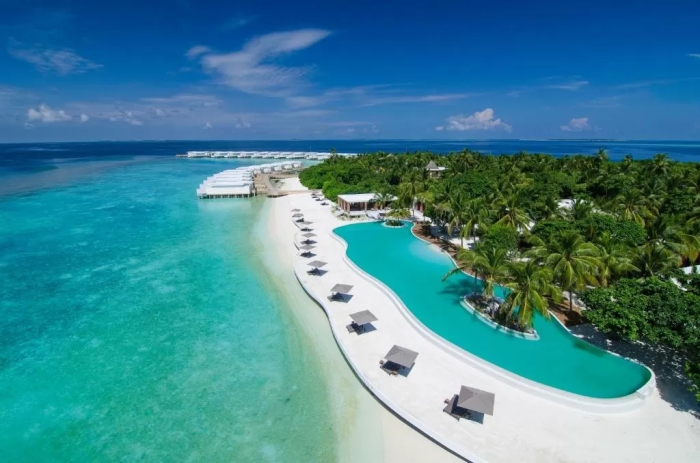
Hussain is a well-known face at Amilla Maldives as the resort’s energetic Assistant Manager of Recreation. With lower demand due to the pandemic this year, Hussain pivoted to a three-month secondment in HR Special Projects.
These unique projects are aimed at maximising the quality of life for everyone working at Amilla. They range from renovating the Islanders’ accommodation block to transforming the staff bar into a chilled-out café-style community space.
This dynamic and multi-talented Islander has also helped plan and run staff events — creating some dazzling decorations in the process. He has even channelled his inner artist to create paintings to brighten up staff areas.
Hussain originally hails from Kurendhoo, a small island in Lhaviyani Atoll. We caught up with him to find out more about how he’s ringing in the changes behind the scenes at Amilla.

How does a typical day begin for you?
With my current role, I don’t so much follow time as follow projects and people. So, I normally wake up around 6am, read the news from the Maldives and around the world for half an hour, do 15 minutes of stretching and warming up for the day, take a shower and then I’m ready to start my day.
Often, when I start something, I’ll have to finish it, otherwise I just cannot sleep! So, sometimes, if I had a late night, I’ll wake up at around 7am but never later than 7.30am, so I can get things done.
Every day can be different depending on my tasks, but one of my favourite things to do is making decorations for staff events. Everybody says I’m really good at it. I also like doing carpentry and painting abstract stuff. The management has given me a lot of opportunities to try out new ideas and the freedom to learn new things, which I really appreciate.
How closely do you work with the other Islanders on your projects?
The best resource of any company is their staff. If we don’t care for them, they won’t enjoy their jobs or their life with us. So, our first priority is always our staff and our guests.
Getting feedback every day is the biggest thing in HR Special Projects. Before we make any new service or changes, we get feedback from the staff. That’s because we need to give them what they want where this is possible. Normally, lunchtime is the best time to go speak to them. The best way I’ve found to do it is to have a friendly chat. I just go to wherever they are, have a coffee with them, then ask them in a friendly way. Otherwise, if I just ask them formally, they might not open up.
What has been your favourite special project to work on so far?
I thought something I really had to do was provide what the Islanders really need, so I started working with the Bliss tuck shop, because it’s difficult to get what they need from other islands, especially with the Covid-19 restrictions. So, I’ve changed the concept and created more options as well as redesigned the shop. Red Bull is the most popular item, of course! It’s their basic need, they enjoy it a lot. But although we have a canteen, we didn’t have anything like a café area for them to enjoy the drinks they bought from the shop.
What was the solution?
We have a nice bar which needs a little attention to evolve the concept into something new because as Maldivians, with our culture, we’re not allowed to drink alcohol. So, if we have a bar where people think it only serves alcohol, it means some of the staff can be there, but some might not feel comfortable. I’m leading on the project to transform the bar into an area where the Maldivian staff and expat staff can enjoy things together as one family. This new concept will be more than a bar, it’ll be more like a café area where staff can also do things like book a cinema night, or celebrate a private birthday party with their friends, and so on.
How did you end up in this special projects secondment?
I went back to my island when the Covid-19 pandemic hit but they called me to ask if I was interested in this role. Before this I was working in recreation. I love being active and working with guests and wanted to be back at Amilla with this new opportunity to help me grow and have new experiences.
Can you tell us about your journey to working in recreation?
When I was a teenager, I loved sports and I wanted to play sports professionally, but unfortunately there weren’t many opportunities in the Maldives at the time, so I decided it wasn’t a good idea. Then I decided that recreation at a resort would be a good job because then you get to do everything. But it was hard to get into, so I actually started working in childcare at another resort.
I love kids and it was fun. I spent four years there and became Kids Club Manager, but I still wanted to get into recreation. So, I took a step down to become a Recreation Supervisor at another resort and then finally became Recreation Manager. It was hard to take a step backwards, but it was worth it .
Then I got a knee injury and couldn’t do sports anymore. I had to slow down and from there I decided to learn more about creative art and tennis too. Then this year I got offered the chance to join the HR team, taking care of special projects and staff communications.
I learned one thing from my past; I didn’t follow my passion when I was a teenager to become a professional sports player because of the restrictions including my injury. But I ended up learning many other things that I can use to create beautiful things or to make magic, as our HR Director says! And now with the knowledge and experience I have, I just want to help other people to be happy and follow their passions.
For more information about the resort and bookings, please email sales@amilla.mv or visit www.amilla.com
Action
Sustainable development of coral reefs at Cinnamon Dhonveli Maldives

Renowned for its iconic stunning over-water suites, Cinnamon Dhonveli Maldives is a beautiful tropical island resort offering exclusive access to the classic Pasta Point surf break, described as the “wave-machine” of the North Malé Atoll due to its consistent four to six foot waves.
Green Globe recently recertified Cinnamon Dhonveli Maldives.
The resort first started their coral restoration project in 2018 to help replenish diminishing coral reefs and have continued to develop this initiative since then.
“Coral reefs represent some of the world’s most spectacular beauty spots. They are also the foundation of marine life, without them many of the sea’s most exquisite species will not survive,” Sanjeeva Perera, General Manager at the resort, explained.
“The awareness and in-depth knowledge we receive from Green Globe during the recertification process continues to guide us on the correct path to take in the bold steps forward toward the sustainable development of coral reefs that will benefit future generations in the Maldives.”
Coral reefs in oceans all around the world are dying. It is estimated that nearly one sixth of these reefs will be dead within the next twenty years.
In keeping with the commitment of Green Globe members to manage and operate businesses to the highest level of sustainability, the Cinnamon Dhonveli team initiated this mariculture project two years ago focusing on the pre-emptive restoration and rejuvenation of reefs affected by coral bleaching.
The project uses ‘reef balls’ as artificial reef structures implanted with Mari corals that are cultivated in special nurseries. The reef balls are then transplanted onto the bare substrate to grow.
With marine conservation at the heart of their sustainability vision, the Cinnamon Dhonveli team is committed to making their artificial coral reef propagation project a great success in the Maldives.
They also aim to set up a Marine Discovery Centre to educate visiting youth and children in coral reef propagation, environmental awareness, and the rearing and rescue of sea turtles.
Located no more than a 25-minute speedboat ride from the main Velana International Airport, Dhonveli’s proximity and diversity combine to make it one of the most popular destinations in the Maldives.
The island is constantly buzzing with action as divers, surfers and beach bums alike find a common ground in the world of excitement this little island has to offer. Magnificent waves and a policy of sustainable surfing combine to make Pasta Point at Cinnamon Dhonveli one of the most sought after surfing locations by award-winning surfers from around the world.
Large families, groups of friends, divers and snorkelling buffs all seem to find a comfortable common ground in the heady atmosphere of the 16-acre island as well. Sink your teeth into our succulent seafood and indulge in the theme nights at each of the three restaurants with the best of international cuisine. Unwind at the spa or sink into the comforts of the 148 plush rooms.
-

 Cooking1 week ago
Cooking1 week agoThe St. Regis Maldives Vommuli Resort welcomes Chef Renzi Gianluca for Tastemaker series collaboration
-

 Entertainment1 week ago
Entertainment1 week agoAward-winning singer Nicole Scherzinger to appear at One&Only Reethi Rah’s New Year’s Eve celebrations
-

 News1 week ago
News1 week agoSeaside Collection opens .Here, an ultra-private two-island resort in Maldives
-
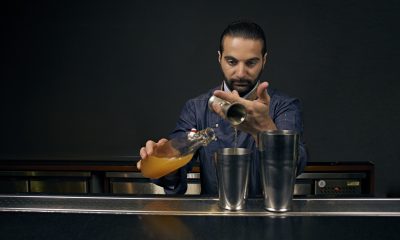
 Cooking1 week ago
Cooking1 week agoTAPASAKE Maldives marks first anniversary with Luca Cinalli guest mixology night
-
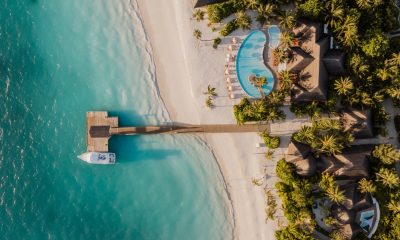
 Awards1 week ago
Awards1 week agoSun Siyam Iru Veli awarded ‘Best Resort’ title at 2025 Bund Design Hotels Awards
-
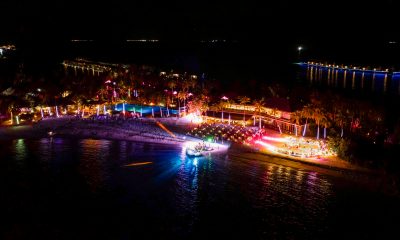
 News1 week ago
News1 week agoHard Rock Hotel Maldives unveils holiday line-up featuring Christmas and New Year gala nights
-
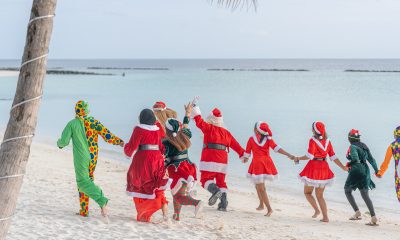
 News1 week ago
News1 week agoCelebrate retro tropicana holiday at SAii Lagoon Maldives
-

 Action1 week ago
Action1 week agoDenise Höfer returns to The Nautilus Maldives for four-day padel programme in March 2026














